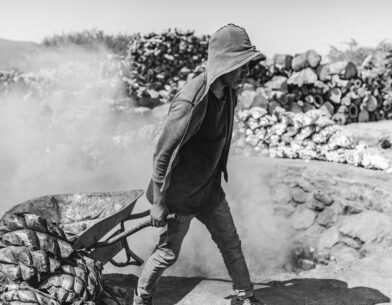The blue agave plant is harvested for tequila production at different times depending on the region and the type of tequila being produced. Generally, the plant is harvested when it is between seven and ten years old.
The harvesting process begins by cutting off the leaves of the plant, leaving the heart of the agave, known as the piña. The piña is then cut into smaller pieces and cooked in an oven or autoclave. After the piña is cooked, it is mashed and the juice is extracted.
This juice is then fermented and distilled to create tequila. The entire process, from harvesting to distillation can take up to two months. The blue agave plant is an important part of tequila production and is harvested at different times depending on the region and the type of tequila being produced.
At what age is the blue agave plant harvested for tequila?
The blue agave plant is harvested for <a href=/what-is-the-difference-between-100-agave-tequila-and-mixto-tequila/> tequila</a> production when it reaches maturity, which is typically between 7 and 10 years of age. The plant is harvested by jimadores, who use a sharp tool called a coa to cut the leaves from the base of the plant.
The leaves are then discarded, and the core of the plant, known as the piña, is removed and taken to the distillery. The piña is then cooked, mashed, and fermented to create the base for tequila.
The aging process for tequila can vary depending on the type of tequila being produced, but it is typically aged for at least two months in oak barrels. The longer the tequila is aged, the smoother and more complex the flavor will be. So, when it comes to tequila production, the blue agave plant is typically harvested between 7 and 10 years of age.
How long does the harvesting process take for tequila?
The harvesting process for tequila can take anywhere from two to four months, depending on the type of tequila being produced. The harvesting process begins with harvesting the agave plant, the main ingredient in tequila. The agave plant is harvested by hand and then cut into small pieces.
The pieces are then cooked in an oven or autoclave for several hours. After the cooking process, the agave is mashed and fermented. The fermentation process can take two to four weeks, depending on the tequila being produced.
Once the fermentation process is complete, the tequila is distilled and aged in oak barrels for several months. The aging process can take anywhere from two to four months, depending on the type of tequila being produced. After the aging process is complete, the tequila is bottled and ready for consumption.
The entire harvesting process for tequila can take anywhere from two to four months, depending on the type of tequila being produced.
What regions harvest the blue agave for tequila?
The blue agave is the main ingredient used to make tequila, and it is harvested in several regions of Mexico. The most notable region for harvesting blue agave is the state of Jalisco, located in the western part of the country. This region is known for its high-quality agave and is home to some of the most famous tequila brands.
Other regions that harvest blue agave include Nayarit, Guanajuato, Michoacán, and Tamaulipas. Each region has unique climate and soil conditions that make it ideal for growing the agave plant. The harvesting process is labor-intensive and requires skilled workers to carefully cut the agave and remove the leaves.
The harvested agave is then transported to distilleries, where it is processed into tequila. The blue agave is an important part of Mexican culture and is essential for producing the world-renowned tequila.
